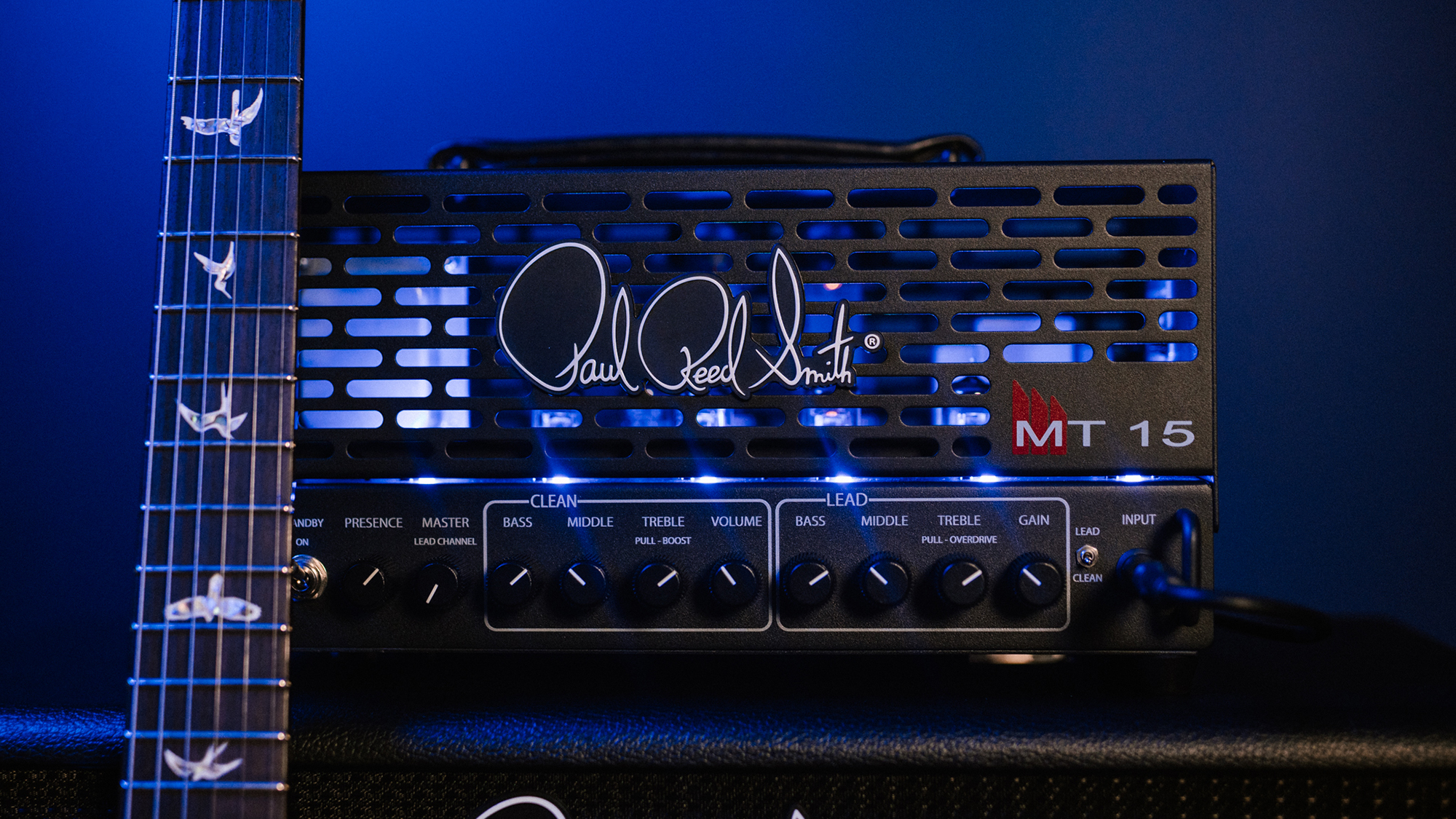Les Paul Standard vs Les Paul Studio: what's the difference between these celebrated Gibson singlecuts
Want to know which Les Paul is right for you? We unpick the history, players and tones of the Standard and Studio
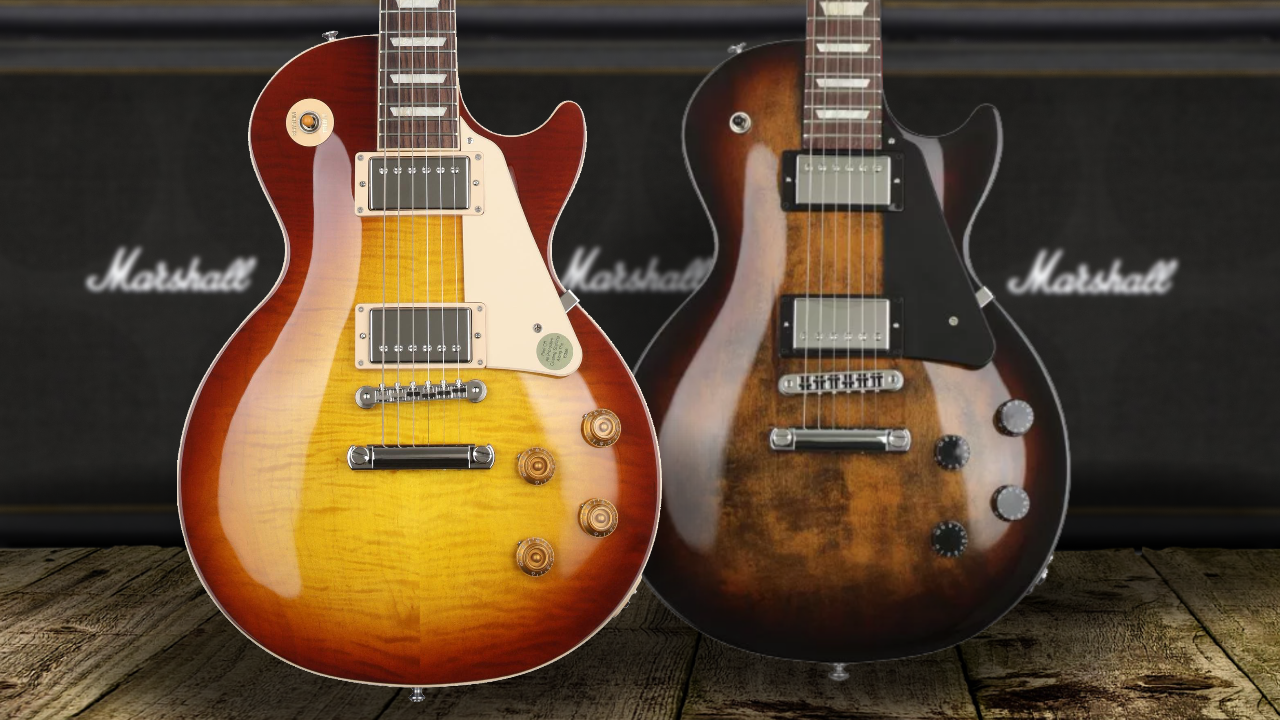
No guitar quite embodies the devil-may-care attitude of rock n roll quite like the Gibson Les Paul. In the right hands, the Les Paul is a formidable weapon against dull, lifeless music, with just one strike of a distorted A chord enough to make other genres cower in fear. With that in mind, it's not hard to see why numerous players aspire to one day own their very own LP, with this legendary guitar becoming somewhat of a dream axe for many.
While back in the day, buying a Gibson was relatively straightforward – assuming you had the cash – with only a hand full of variations available. Today, on the other hand, there appears to be a Les Paul to suit everyone's taste and playing style, with ultra-modern variants and vintage reissues among the slew of singlecuts available. So, with many guitars sharing so many traits, it can get a little confusing to know which is the right six-string for you – but don't worry, we're here to help unravel the mystery of the Les Paul Standard and the Les Paul Studio.
Les Paul Standard vs Les Paul Studio: at a glance
Les Paul Standard '60s
- Body Material: Mahogany
- Top: AA Flame Maple
- Neck: Mahogany
- Fingerboard: Rosewood
- Radius: 12"
- Inlays: Acrylic Trapezoids
- Pickups: Burstbucker 61R/61T
- Weight Relief: None
- Tuning Machines: Grover Rotomatics w/ Kidney Buttons
- Finish: Gloss Nitrocellulose Lacquer
- Find out more: Gibson
Les Paul Studio
- Body Material: Mahogany
- Top: Maple
- Neck: Mahogany
- Fingerboard: Rosewood
- Radius: 12"
- Inlays: Acrylic Trapezoids
- Pickups: 490R/498T
- Weight Relief: Ultra-Modern
- Tuning Machines: Grover Rotomatics w/ Kidney Buttons
- Finish: Gloss Nitrocellulose Lacquer
- Find out more: Gibson
Two of the most famous Les Paul models are the renowned Les Paul Standard and the understated Les Paul Studio. As the name suggests, the Standard is supposed to represent the gold standard available from the USA factory. Gibson has often used the Standard to showcase new technology, advancements in building techniques, and anything else that would result in a better playing experience. Gibson has debuted many new features on the Standard model over the years, from locking machine heads to asymmetrical neck profiles. However, for 2022, the Standard has gone back to basics and now sports either the ‘50s or ‘60s spec.
The Studio takes the Les Paul back to its bare essentials, resulting in a more cost-effective guitar that may lack the sparkle and pizzazz of the Standard, but feels and, more importantly, sounds precisely like this famed singlecut should.
Les Paul Standard vs Les Paul Studio: History
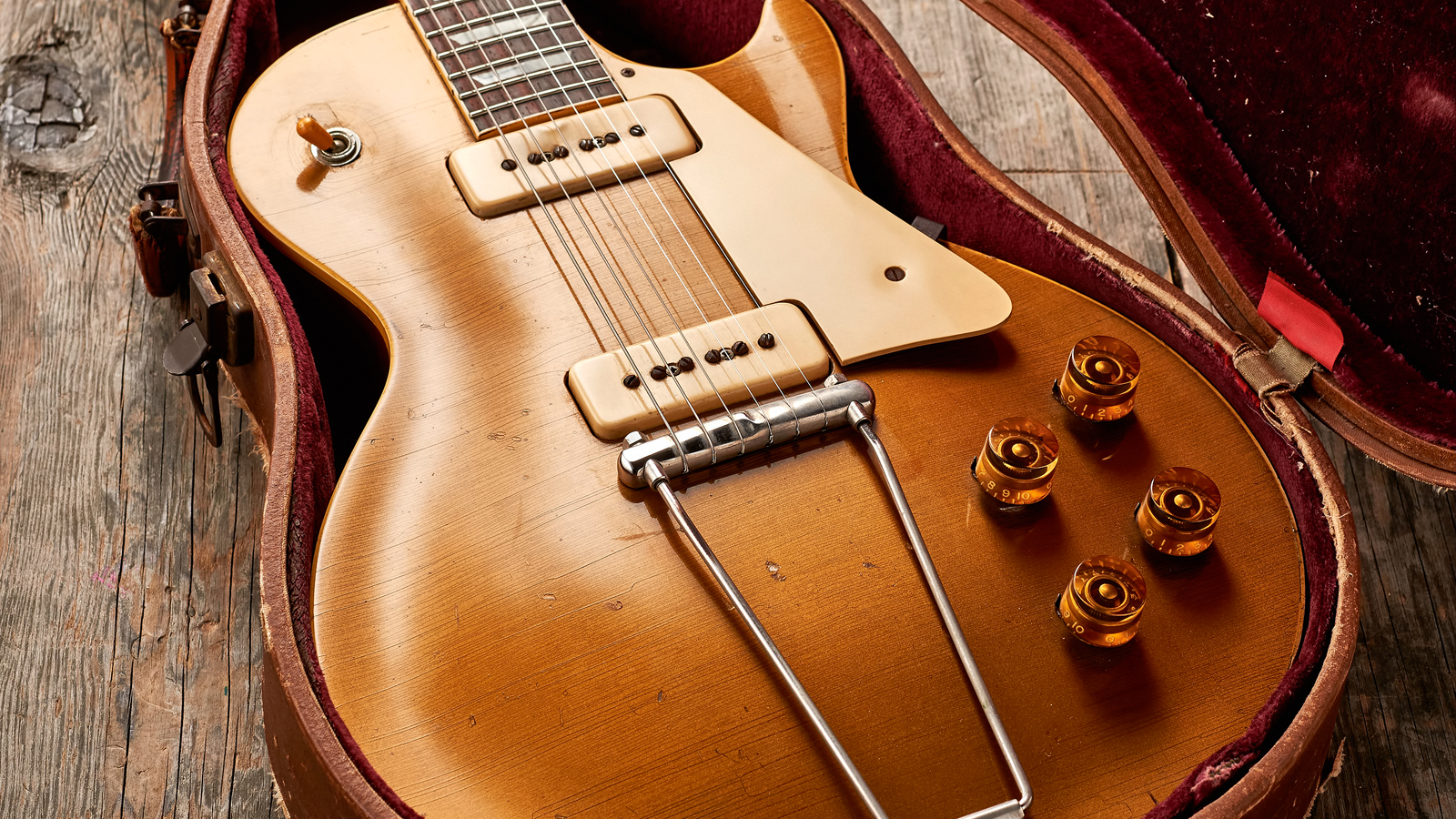
Now, the history of the Les Paul is a rather long and complicated one. Many books have been written on the subject, with conflicting accounts on who came up with the original design and even arguments on how many instruments were produced during the guitar's golden years. So that's why we're going to give you an abridged version of the LP's assorted history here.
The Les Paul Model was born in 1952 and is widely credited as a collaboration between then Gibson President Ted McCarty, factory manager – turned Vice President – John Huis, and of course, the man, the myth and legend, Lester William Polsfuss, or Les Paul, to you and me.
While the idea of a solid-bodied guitar was presented to Gibson by Les back in 1941 – lovingly referred to as The Log – Gibson ultimately decided to pass on the concept, allowing their Californian foes to sweep in and claim the first-ever commercially available solid body guitar for themselves. Needing a guitar that would allow them to compete with the newfound success of Fender, Gibson turned to the celebrated jazz player and seasoned inventor, and the gilded Les Paul model was unveiled.
Get The Pick Newsletter
All the latest guitar news, interviews, lessons, reviews, deals and more, direct to your inbox!
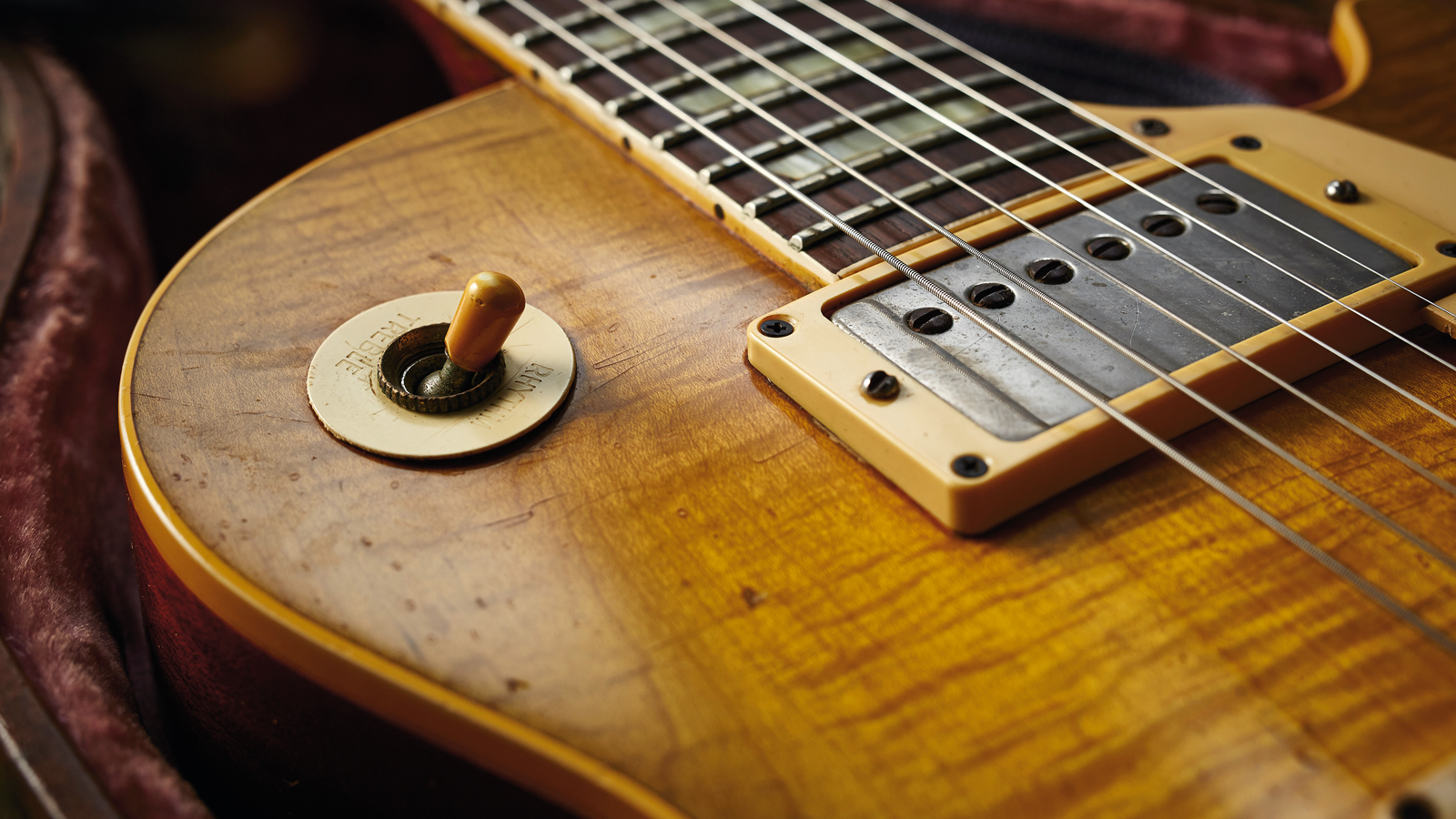
The original version of the Les Paul to hit guitar store shelves didn't look all that dissimilar to the one we all know and love today. While this early '50s LP featured a mahogany body and neck, as well as a maple cap, it did differ slightly, with the addition of a trapeze tailpiece and two "soap bar" P-90 pickups. By 1957 the Les Paul would start to look even more familiar, with PAF humbucking pickups and Tune-O-Matic bridge and tailpiece.
The next three years would see Gibson stumble onto what many believe to be the winning formula for the Les Paul Standard – the burst! This group of sunburst Les Pauls is among the most sought-after six-strings in the world, with Gibson making countless reissues to help bring a little of their magic to those of us who can't afford to spend upwards of 100K on an original instrument.
In '61, Gibson would make a drastic decision to redesign the LP to what we now think of as the SG, in an effort to keep up with the rising popularity of the futuristic Stratocaster. Although this new double-cutaway axe would still bear the Les Paul moniker, the guitar would eventually officially become the SG in 1963. Gibson would later re-introduce the Les Paul in all its single-cut glory in 1968 and has been producing various versions of the Les Paul Standard ever since.
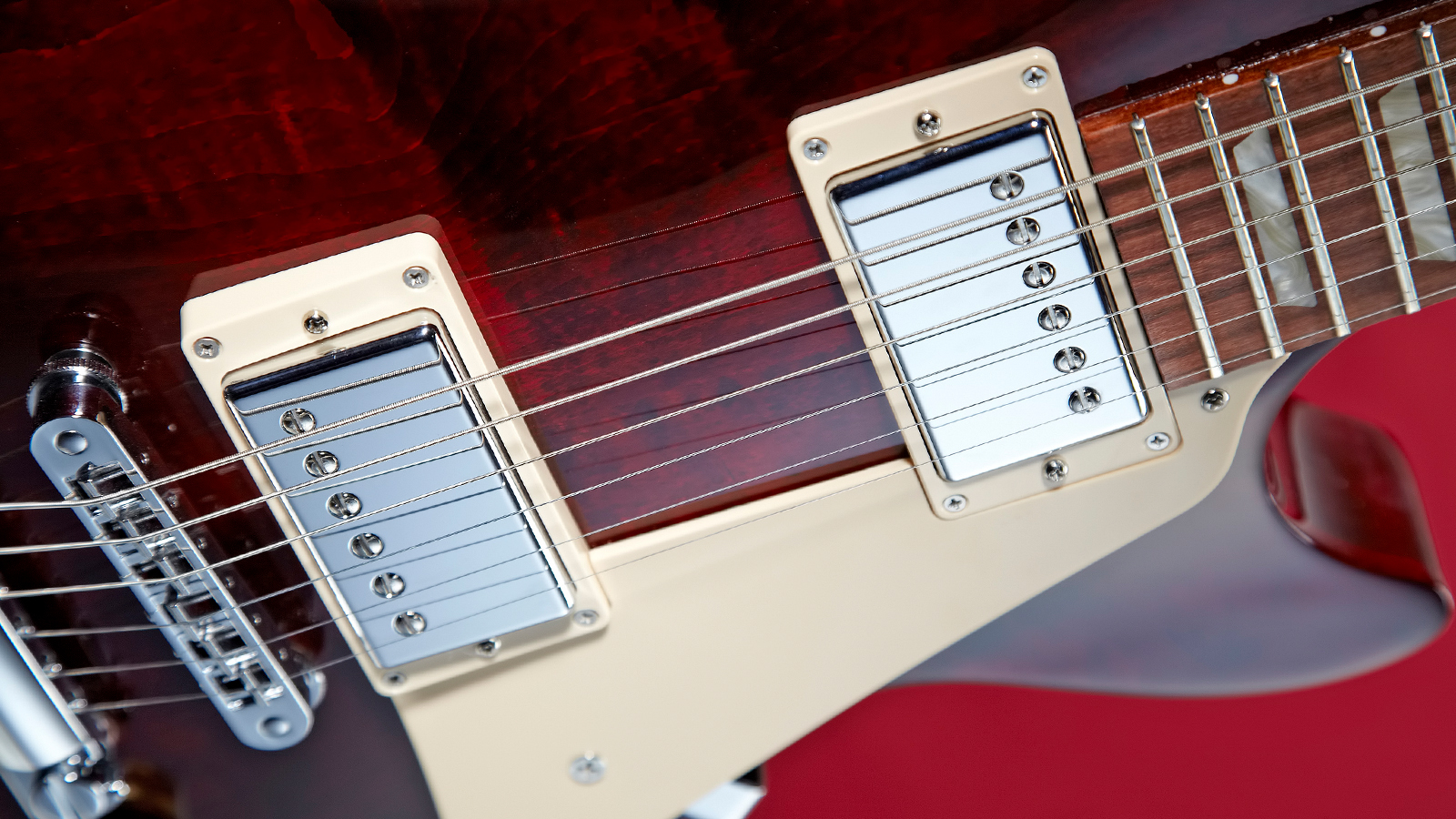
The Studio model would debut in '83 and was designed to be an affordable option for those seeking the emblematic LP tone without the hefty price tag. The term "studio" refers to the fact that these guitars sounded just like their more premium brothers, and in a studio setting, you'd be hard-pressed to find a sonic difference.
Initially, Gibson opted to go for an ever so slightly thinner alder body but ultimately decided to revert to the tried and tested mahogany and maple combo we all expect from our LPs. The Studio has gone through many other changes over the years, from switching between ebony and rosewood fingerboards to numerous pickup changes and even a hi-tech robotic variant – sadly a guitar that would be required to pass the Turing Test didn't quite catch on with the vintage-obsessed guitar community, and after a short-lived run, the Studio would go back to it's humble, non-robotic roots.
Since its release in the early '80s, the Studio has been a staple of the Gibson lineup and has been the go-to model for those seeking the classic sound without any of the flashy looks of the Standard.
Les Paul Standard vs Les Paul Studio: Players
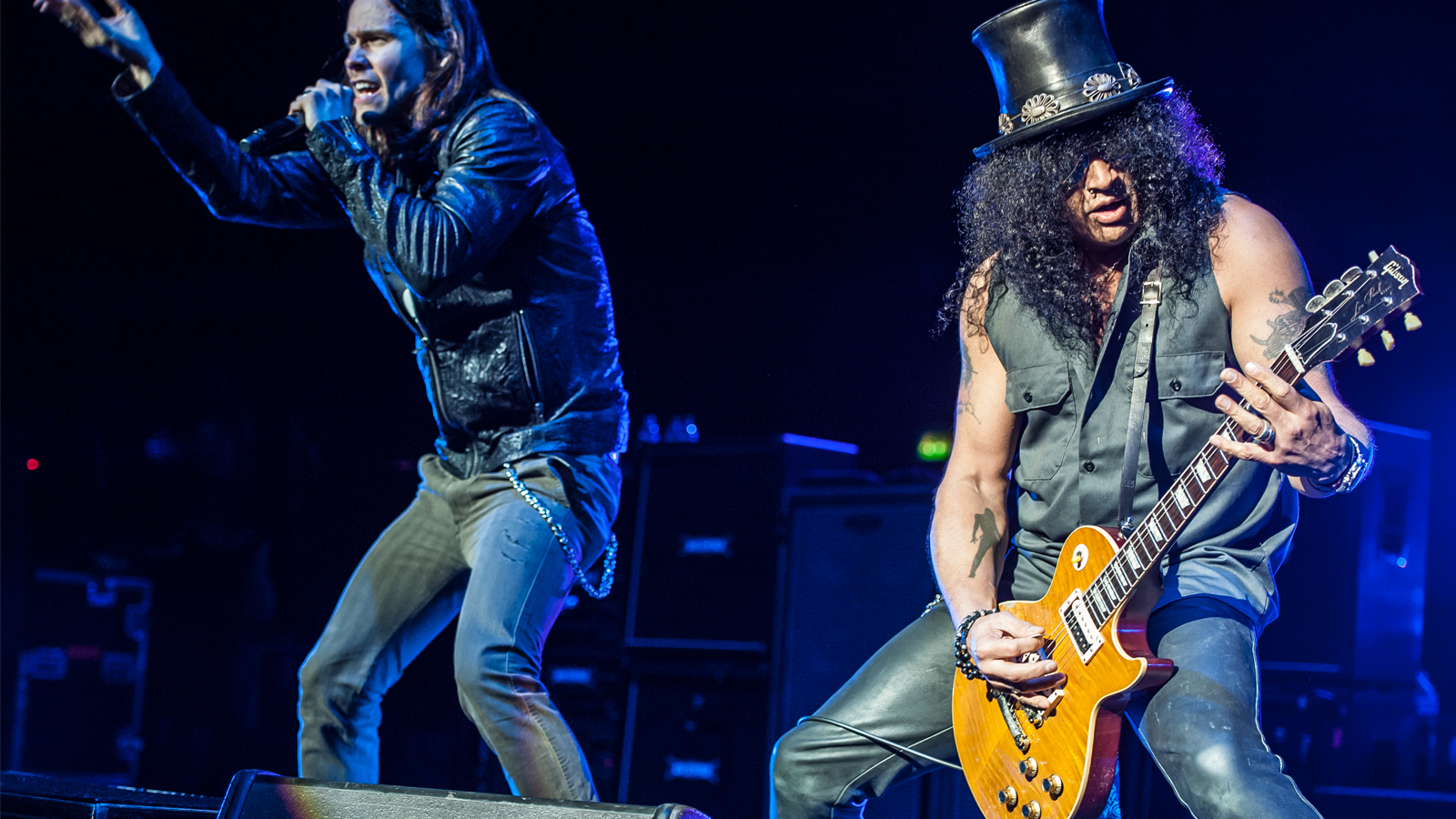
When it comes to the players linked to the Les Paul, it would probably be quicker to list the guitarists who haven’t used this famous flame-topped beauty. The Les Paul Standard has made its way onto countless records, with guitar heroes such as Jimmy Page, Gary Moore, and Billy Gibbons putting the LP through its paces on some of the biggest songs of all time.
Modern players such as Grammy award-winning country star Jason Isbell and master of strange noises Tom Morello have also used a Les Paul to achieve many of their genre-defining tones, proving just how versatile this guitar can be.
The Studio may be considered the budget option, but it hasn’t stopped many famous players from using them both on stage and well, in the studio. The stripped-down nature of the Studio seems to speak to the punk sensibilities of many players and has been embraced by this scene with open arms. You’ll often see Jade Puget of Californian punk band AFI, Frank Iero of emo powerhouse My Chemical Romance and Chris Burney of Bowling For Soup using the Studio to entertain the masses at festivals around the world.
Les Paul Standard vs Les Paul Studio: Differences
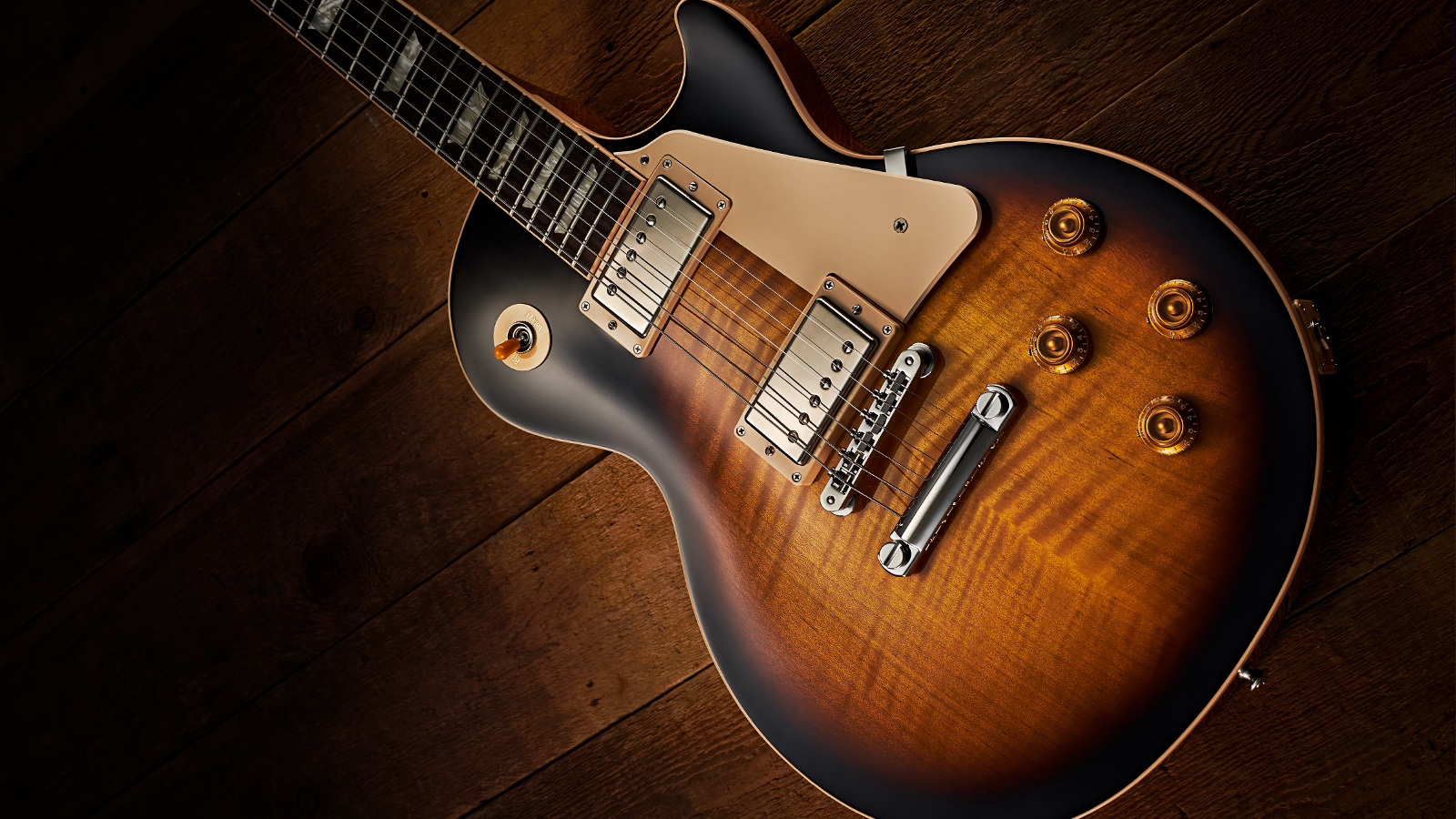
Okay, we’ve covered the players and the history – albeit briefly – now it’s time to actually discuss what is so different about these two guitars. At first look, there isn’t too much of a difference between the Standard and Studio, especially in 2022.
Both guitars feature a mahogany body and neck, and both are adorned with a maple top, although the Standard does employ a striking piece of AA flame maple, while the Studio opts for the more understated plain option. These guitars even share a fingerboard, with the two guitars sporting a 12” radius rosewood ‘board with acrylic trapezoid inlays.
Now, you’d be forgiven for thinking that the differences between these two guitars are purely cosmetic, but that isn’t actually the case.
Where these guitars diverge greatly is in the binding department. While the Standard is embellished with a cream outline courtesy of its plastic binding, the Studio leaves its edges bare, resulting in a completely different look. It’s also worth noting that the Standard has the mother of pearl Gibson logo sitting pride of place at the top of the headstock, whereas the Studio has the less labor-intensive gold Gibson decal, typically found on Juniors and Specials.
Now, you’d be forgiven for thinking that the differences between these two guitars is purely cosmetic, but that isn’t actually the case. One massive difference is the use of weight relief in the Studio model. For 2022, the Studio comes with a strategically chambered mahogany body to make it a little easier on your back.
At the heart of each guitar is a set of Gibson branded humbuckers, but the specific types do differ between the Standard and Studio. For example, the Standard sports Burstbuckers – 61R/61T for the ‘60s model and Burstbucker 1/2 for the ‘50s model – which deliver a retro-inspired tone, whereas the Studio opts for the more contemporary-sounding 490R and 498T. The Studio also comes with tone-altering electronics on board, in the form of push/pull volume controls which allow you to get single-coil sounds at the pull of a button.
Lastly, we have to mention that there are exclusive finish options reserved for each model. While both employ a gloss nitrocellulose lacquer, the color options do differ. The Standard is available in a variety of bursts, as well as a Gold-Top for the '50s edition, while the Studio comes in Wine Red, Ebony and the contemporary Smokehouse Burst.
Les Paul Standard vs Les Paul Studio: Buying advice
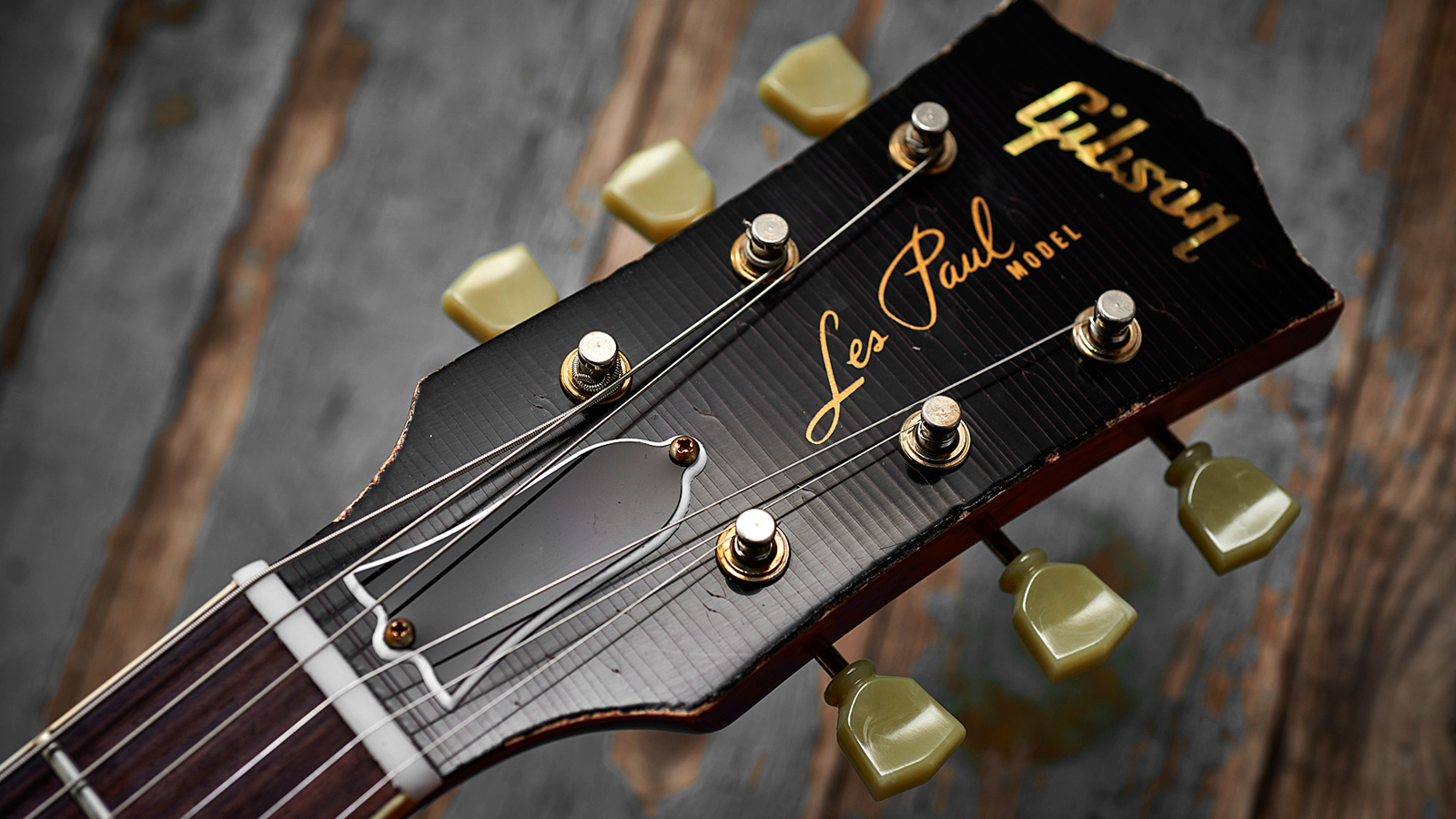
So, we’ve discussed the differences between the Standard and Studio, but how do you know which is the right guitar for you? Well, really, it all depends on what sound and style you are looking for.
If you are seeking the classic Les Paul tones of yesteryear – and you want to own an icon of the electric guitar world – then the Gibson Les Paul Standard is the guitar for you. There’s a reason these guitars have been so popular for so long, and frankly, Gibson is currently making the best Les Pauls they have done in years.
If you are going down the Standard route, you’ll want to decide on whether you want the ‘50s spec or ‘60s spec. The main difference between these two is the neck profile, pickups and, of course, the color options. There are no right or wrong decisions here. Go for the one that feels right to you.
If you are longing for a more modern sound with tone-altering electronics built-in, then the Studio may be the right choice - not to mention you’ll save yourself some cash! For us, the Studio is a fabulous guitar that definitely should not be underestimated.
It’s worth noting that if your budget is tight, then Gibson's little brother Epiphone is currently producing some stellar Les Pauls right now. Be sure to check out our comprehensive guide to the best Epiphone Les Pauls, to find out which models we highly rate.
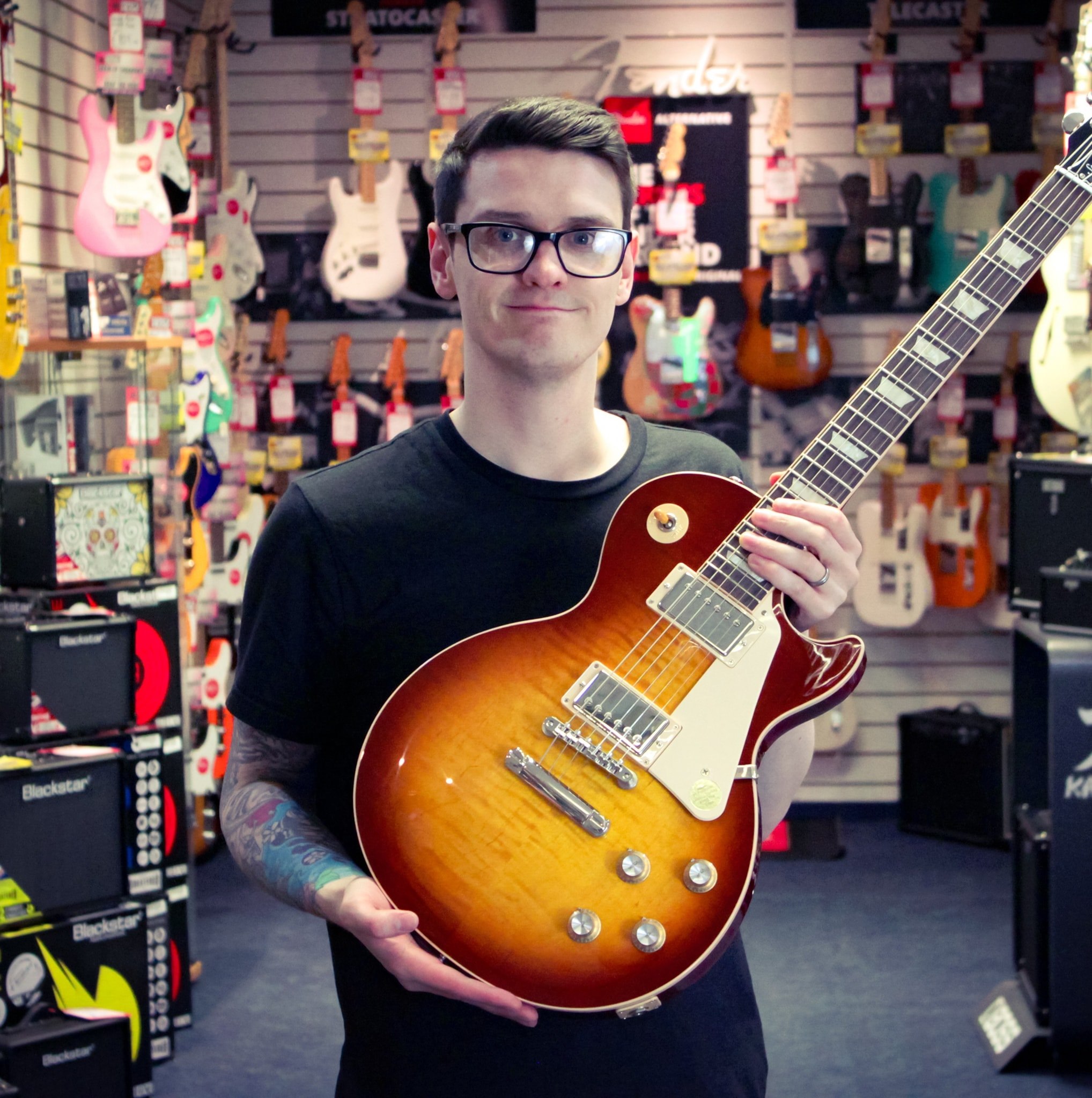
Daryl is a Senior Deals Writer at Guitar World, where he creates and maintains our 200+ buyer's guides, finds the best deals on guitar products, and tests the latest gear. His reviews have been featured in prominent publications like Total Guitar, Future Music magazine, and MusicRadar.com.
During his career, he has been lucky enough to talk to many of his musical heroes, having interviewed Slash and members of Sum 41, Foo Fighters, The Offspring, Feeder, Thrice, and more. In a past life, Daryl worked in music retail. For a little under a decade, he advised everyone from absolute beginners to seasoned pros on the right gear for their needs.
Daryl is also a fully qualified sound engineer, holding a first-class Bachelor's degree in Creative Sound Production from the University of Abertay.
“This would make for the perfect first guitar for any style of player whether they’re trying to imitate John Mayer or John Petrucci”: Mooer MSC10 Pro review
“The most in-demand mods straight from the factory”: Fender’s elevated Player II Modified line brings the firm’s most sought-after guitar upgrades to the masses



![John Mayer and Bob Weir [left] of Dead & Company photographed against a grey background. Mayer wears a blue overshirt and has his signature Silver Sky on his shoulder. Weir wears grey and a bolo tie.](https://cdn.mos.cms.futurecdn.net/C6niSAybzVCHoYcpJ8ZZgE.jpg)

![A black-and-white action shot of Sergeant Thunderhoof perform live: [from left] Mark Sayer, Dan Flitcroft, Jim Camp and Josh Gallop](https://cdn.mos.cms.futurecdn.net/am3UhJbsxAE239XRRZ8zC8.jpg)




